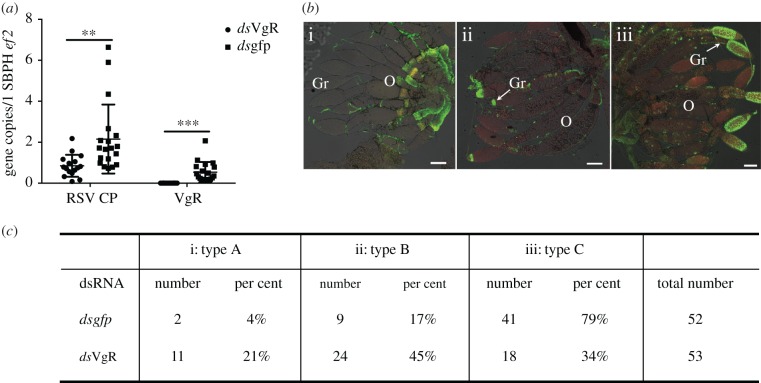Figure 2.
Influence of a VgR deficiency on RSV infection of the L. striatellus ovary. RSV-infected fifth-instar nymphs at 24 h before eclosion were injected with dsRNA. Both VgR knockdown efficiency and the RSV titre were measured 48-h posteclosion. (a) Quantitative assessment of RSV in dsRNA-injected ovaries. Each dot represents one RSV-infected L. striatellus ovary. Both means and s.d. were calculated from three independent experiments, with 5–7 mRNA samples per experiment. Ef2, L. striatellus elongation factor 2 gene. **p < 0.01; ***p < 0.001. (b) Immunofluorescence assay to define different RSV infection levels in L. striatellus ovarioles. (i) Type A, RSV did not invade the ovariole; (ii) type B, RSV began to invade the tip of the germaria of only a few ovarioles and (iii) type C, RSV present in most of the germaria of nearly all ovarioles. Arrows indicate the RSV-infected area. The RSV antibody was conjugated to Alexa Fluor 488. Gr, germarium; O, oocyte; scale bar, 100 µm. (c) Statistical summary of L. striatellus individuals with different RSV infection levels. The dsVgR-treatment of L. striatellus impeded the ability of RSV to infect L. striatellus ovarioles when compared with the dsgfp-treatment. Each number represents one ovary dissected from one insect. The total 52 or 53 analysed ovaries were collected from three independent dsRNA injection experiments; in each experiment, 15–20 insects per group were analysed. (Online version in colour.)

